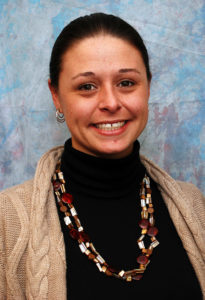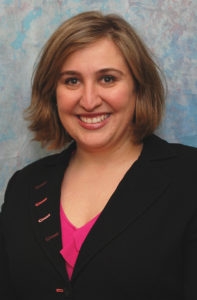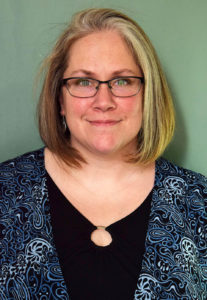Development is inevitable. All children will change physically, emotionally, and intellectually. Preparation for these changes can assist in the transition from childhood to adulthood. The goals set in preparing individuals with Autism Spectrum Disorder (ASD) for these changes are no different than those set for individuals of typical development (Murphy & Elias, 2006). However, determining where to begin and what to teach individuals with ASD in the realm of sexuality must be met with great planning and consideration of cognitive, social, and communicative deficits. This article aims to outline some of the barriers clinicians and educators face when addressing the needs of their clients in the realm of sexuality and relationship training, and to provide recommendations based on the practice of our organization.

Jill Harper, PhD, BCBA-D

Silva Orchanian, MEd, BCBA, LABA

Amy J. Foley, MEd, BCBA, LABA
Travers and Tincanci (2010) outlined the importance of human sexuality training for individuals with ASD. The authors remind us of the susceptibility to abuse, the importance of, and right to learn about relationships, as well as facilitation of good hygiene, health, and safe sexual behaviors. Despite the importance of such training for individuals with ASD, there are limited research-based resources around this topic. One likely reason for limited research in this area is the taboo nature of discussions around sexual development; it is difficult to talk about in any population, nonetheless when discussing the needs of individuals with ASD. This difficulty, in part, arises from fear and anxiety of staff and parents training outcomes. For example, the fear of overgeneralization of specific skills taught. Such fear and anxiety often leads to sexuality training for persons with ASD as a reactionary rather than preventative strategy (Gerhardt, 2011).
In an attempt to address the limited research and need of our clients, our organization formed a Human Sexuality Task Force to guide clinicians and educators. When developing such a task force, it is recommended to include a multidisciplinary team consisting of clinicians, educators, and other professionals in the field (e.g., social workers or psychologists), as well as parents and caregivers that meet regularly to discuss the ongoing needs of their clients. The first step of the task force is assessing the needs of our clients, and then developing curriculum tailored to address those needs utilizing literature and available resources.
It is essential to obtain consent from parent or caregivers and, at times the individual themselves, prior to conducting assessment. If request for consent is met with hesitation, additional discussions and training should take place as the client continues to grow and develop. Initiation of assessment and training should not occur until consent is provided. Above and beyond initial consent, we at Melmark New England, make every effort to involve families throughout the entire process. When communication with families it is important to take into account the family’s perspective and wishes into account.
Depending on the nature of the need, assessment may include formal tools such as the Socio-Sexual Knowledge and Attitudes Assessment Tool – Revised (Griffiths & Lunsky, 2003) and the Checklist of Adaptive Living Skills (Morreau & Bruininks, 1991). Such tools may need to be modified to fit the needs of the clients with whom you work. A more individualized assessment process consists of functional and descriptive assessments which allow the team to directly observe conditions under which the behavior is, or is not, currently displayed. Hartman (2014) provides one example of a Functional Behavior Assessment tool in the Appendix E of his book “Sexuality and Relationship Education for Children and Adolescents with Autism Spectrum Disorders: A Professional’s Guide to Understanding, Preventing Issues, Supporting Sexuality and Responding to Inappropriate Behaviours.” This tool follows the conceptual outline of any functional assessment: define the behavior and establish a baseline measure, evaluate current skills related to the target behavior and conditions under which these behaviors occur, analyze data from the initial assessment and plan for the next steps.
A general scope and sequence of topics related to human sexuality development, from childhood to adulthood, guides the recommendations set forth by the task force. It is important to note that human sexuality training covers a wide range of topics, some of which are important to consider teaching during early childhood. For example, labeling body parts are crucial prerequisite skills that can be taught within the context of a grooming routine. During adolescent years, teaching about changes to one’s body prepares individuals for the transition to adulthood. In addition to gender-specific skills, it is also important to consider other skill sets such as self-advocacy and social skills as part of the larger curriculum. Factors to consider when teaching any skill include prerequisite skills, context of teaching, individual versus group formats, and accessibility to appropriate peer groups. Specific teaching strategies should be empirically-based (e.g., behavioral skills training, discrimination training, chaining, and shaping).
Some skills are more appropriately taught within an individualized format. For example, many of our clients display self-exploratory behaviors around the time of puberty. Upon determining that the behavior may be sexual in nature (i.e. an attempt at masturbation), assessment is conducted and the results are summarized to develop the lesson plan and data sheet. When such a need is identified for a particular client, we must return the scope and sequence to ensure that all perquisite and related skills are also established (e.g., requesting, appropriate context, and safety). Skills that are private in nature should be taught by parents, caregivers, or staff of the same gender. Other skills might be best taught within a group format; one example of such a curriculum is the Circles curriculum (Walker-Hirsch & Champagne, 1991). This curriculum aims to teach individuals to identify people and appropriate interactions based on categories. We recently implemented this curriculum for our clients because it provides concrete categories (e.g., individual, family, friends, and community members) associated with specific visual stimuli (e.g., colors) to promote learning and application.
We, as clinicians and educators, are responsible for teaching these skills to our clients to promote independence and successful transition into adulthood. Our hope is this article provides one example of how an organization can systematically address such an important area of need within the ASD population. The Sexuality Information and Education Council of the United States, “believes that individuals with physical, cognitive, or emotional disabilities have a right to education about sexuality, sexual health care, and opportunities for socialization and sexual expression” (n.d.). We agree, encouraging and challenging clinicians and educators to pursue topics related to human sexuality training, conduct systematic evaluations of assessments and teaching procedures, and to share the results with the greater community. Through the development of an empirical literature base, the fear and anxiety around human sexuality training will cease to be a barrier and the independence and successful life transitions of our clients, our children will be realized.
Amy J. Foley, M.Ed., BCBA, LABA, is a Curriculum Coordinator at Melmark New England. Silva Orchanian, M.Ed, BCBA, LABA, is the Director of School Services at Melmark New England. Jill Harper, Ph.D, BCBA-D, is the Director of Professional Development, Clinical Training and Research at Melmark New England. The mission of Melmark is to serve children, adults and their families affected by a broad range of intellectual disabilities. With service divisions in Berwyn, Pennsylvania, and Andover, Massachusetts, Melmark provides evidence-based educational, vocational, clinical, residential, healthcare and rehabilitative services, personally designed for each individual in a safe environment of warmth, care and respect. For more information, please visit www.melmark.org and www.melmarkne.org.
References
Gerhardt, P. F., & Lainer, I. (2011). Addressing the needs of adolescents and adults with autism: A crisis on the horizon. Journal of Contemporary Psychotherapy, 41(1), 37-45.
Griffiths, D. M., & Lunsky, Y. (2003). Socio-sexual knowledge and attitudes assessment tool-revised. Wood Dale. IL: Stoelting Co.
Hartman, D. (2014) Sexuality and Relationship Education: for Children and Adolescents with Autism Spectrum Disorders.” Philadelphia, PA: Jessica Kingsley.
Morreau, L. E. & Bruininks, R.H. (1991) Checklist of adaptive living skills (CALS). Rolling Meadows, IL: Riverside
Murphy, N. and Elias, E. (2006). Sexuality of children and adolescents with developmental disabilities. Pediatrics, 118 (1), 398-403.
SIECUS (n.d.). Position Statemenst. Retrieved from SIECUS Online http://siecus.org/index.cfm?fuseaction=Page.viewPage&pageID=494&parentID=472.
Travers, J., & Tincani, M. (2010). Sexuality education for individuals with autism spectrum disorders: Critical issues and decision making guidelines. Education and Training in Autism and Developmental Disabilities, 284-293.
Walker-Hirsch, L. & Champagne, M.P. (1991). The Circles Concept: Social Competence in Special Education. Sexuality and Disability, 9 (2), 143-148.





